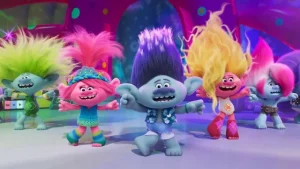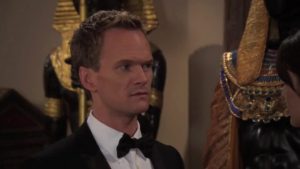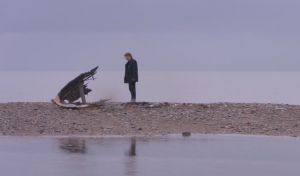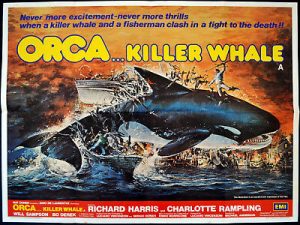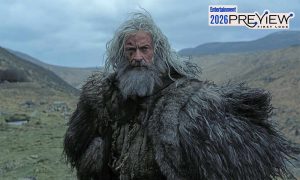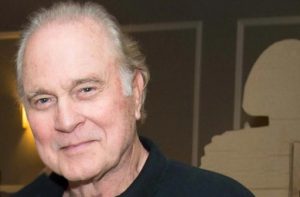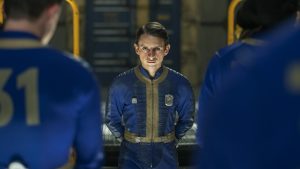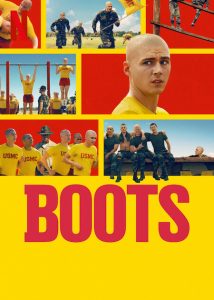ANOTHER SHYAMALAN MOVIE
THAT GETS CAUGHT IN ITS OWN TRAP
Director M. Night Shyamalan has always been the case of cinematic scrutiny and sometimes movie frustration when it comes to his feature films. While he had directed movies like 1992’s Praying with Anger and 1998’s Wide Awake, many moviegoers were introduced to Shyamalan with his 1999 supernatural horror The Sixth Sense, which starred actor Bruce Willis and young upcoming actor Haley Hoe Osmond. From his critical acclaim from both critics and moviegoers of that movie, Shyamalan followed The Sixth Sense with the 2000 superhero movie Unbreakable, which starred Bruce Willis again as well as actor Samuel L. Jackson in the lead roles. While not as met with universal acclaim as he did his previous film, Shyamalan’s Unbreakable was well-received and has gain quite a cult following amongst its viewers. After Unbreakable, however, Shyamalan’s movies were less-than satisfactory, with many (critics and moviegoing audience viewers alike) finding the films like 2002’s sci-fi thriller Signs, 2004’s psychological mystery The Village, 2006’s fantasy drama The Lady in the Water, and 2008’s post-apocalyptic psychological film The Happening to be subpar and weaker movies to what both The Sixth Sense and (to a lesser extent) Unbreakable were able to achieve in movie entertainment, with some sighting that Shyamalan’s weak story / script handling as well as his commonplace “twists” that appear at the end of the film. Even worse were some completely deplorable cinematic motion pictures, including 2010’s The Last Airbender and 2013’s After Earth, which were met with both critical and commercial box office failures. In 2016, Shyamalan released Split, a psychological horror, and regained the public’s interest in the director’s movie, citing the feature as a welcomed “returned to form” for Shyamalan’s works as well as receiving critical positive reviews and praise alike and garnishing roughly $278 million against its $9 million production budget. This was then followed up with 2019’s Glass, which tied the events of Spilt and Unbreakable in a trilogy fashion and explored the origin stance of a superhero, culminating in a finale of this narrative. Following Glass, Shyamalan’s next two films (2022’s Old and 2023’s Knock at the Cabin) faced mixed reviews from critics and moviegoers, with some liking the director’s latest feature film endeavors, while others criticized the movies for being subpar and with mixed results. Now, a year after his release of Knock at the Cabin, M. Night Shyamalan (and Warner Bros. Studios) prepared to release the director’s latest film project with the feature titled Trap. Does this latest cinematic endeavor
THE STORY
Desperate in trying to impress his young teenage daughter, Riley (Ariel Donoghue), Cooper (Josh Hartnett) scores tickets to her favorite performer, Lady Raven (Saleka Shyamalan) at local concert arena. For Riley, it’s a big thing, who’s been dealing with bullying issues, while also offering some time with her father, who isn’t always there for her. Looking out for her daughter’s teen melodrama woes, Cooper is determined to take the concert experience unforgettable, but, while there, begins to take notice of large police / security presence at the show, while F.B.I profiler Dr. Grant (Hayley Mills) is in the arena, studying all the men in the audience as if they are looking for someone in particular. Growing uneasy, Cooper seeks out info about the situation, learning from a friendly employee that the law enforcement knows that the serial killer known as “The Butcher” is in attendance, working their way to his location. Turns out that Cooper is the infamous serial killer that everyone is looking for, which casts a realization of the gravitas predicament that he now finds himself in. As the concert continues, Cooper tries to balance time with Riley, pretending to be goofy fatherly figure to the teen, while also searching for a way out of the arena venue without being noticed, going to extreme lengths to do so and evading police from nabbing.
THE GOOD / THE BAD
Borrowing some lines for my opening paragraph and this one from my review of Glass and Knock at the Cabin….Like many out there, I discovered director M. Night Shyamalan’s work from his most popular film to date (i.e. The Sixth Sense) when it was released back in 1999 (I remember seeing it in theaters and was completely captivated by it). It was definitely something truly special, especially coming from the particular age of films being released around that era (i.e. the late 90s / early 2000s), and the movie’s ending twist was completely awesome. Thus, it’s safe to say that The Sixth Sense is one of Shyamalan’s best movies (and I think many will agree to that). Unbreakable (his follow-up film after The Sixth Sense) wasn’t as good as his previous film, but was still a solid motion picture, which (like I mentioned above) does have a cult following, especially those who have a certain flavor for comic book superheroes nuances. Plus, both Willis and Jackson gave excellent performances in the movie. After that, however, Shyamalan’s feature films were mostly mediocre and were pretty “blah”; following a lot of the same tropes that accompany the director’s style (i.e. a secret hidden “twist” at the movie’s ending). Even looking beyond that, the movie themselves were averagely subpar, ranging from okay-ish to terrible. Don’t even get me started on The Last Airbender and how much of a disservice the movie was to the cartoon series that inspired it.
Thus, my interest in seeing Shyamalan’s movies waned over the years…. until that was Spilt was released and sort of “renewed” my interest in the director’s filmmaking. Whatever you may think of Shyamalan’s classic “twist” tropes, Spilt was well-acted (most notably thanks to actor James McAvoy’s solid performance and quite an engaging movie to follow. Personally, I loved it and thought it was a great film. 2019’s Glass, the follow-up to Spilt, was another great entry in Shyamalan’s work, with the feature acting as a sequel to the previous film as well as 2000’s Unbreakable. There were some few minor criticisms that I had with the movie, including the missed opportunity potential the feature had, but, for the most part, it was a well-met film that acted as a “origin story finale”. I didn’t mention Shyamalan’s 2022 film Old because I didn’t see it in theaters (thought it was a little too creepy for me), so I really can’t base my opinions on the feature. As for 2023’s Knock at the Cabin, I thought it was okay, but more on the disappoint side of things. The acting was good, and the idea / premise held up, but it felt too choppy and just something off about it. Regardless, whether you love him or hate him, M. Night Shyamalan’s project have always been a fixed center point of storytelling with recognizable acting talent and some of the director’s signature style of plot twisting.
This brings me back to talking about Trap, a 2024 psychological thriller and the latest film director M. Night Shyamalan. Given the mixed opinions that I had with Knock at the Cabin, I wasn’t too keen on seeing another Shyamalan movie, with the director’s talents being a bit “hit or miss” with every other release he put out. I didn’t hear much about Trap when it was announced or in development on social media or the frequent places that I go looking movie news on the internet. I think my first “real look” at the upcoming project was when the feature’s movie trailers began to appear online, which certainly did tease some psychological thrills in the footage shown. The premise outline in the preview looked quite interesting, which I presumed would be a sort of “cat and mouse” game amongst the main character and law enforcement throughout the duration of the concert. Plus, given his solid performance in 2023’s Oppenheimer, I was quite interested to see what actor Josh Hartnett would be played to do with the lead character role, who would be both protagonist and antagonist in the film. Still, as always, I did have some type of reservations about the project. I mean…. it’s a Shyamalan film, so you know it might fall apart in the end or at some point. So, with the idea for the movie intriguing, I did go check out Trap several days after its initial release and waited a week or so to get my review done for it. And what did I think of it? Well, it was just okay, but also a little bit disappointing. While Shyamalan does set the stage for an interesting premise / plot and Hartnett gives a stirring performance as deranged serial killer, Trap looses steam at the halfway mark, with the director unsure of how to drive the feature home with a satisfying conclusion. It’s definitely a Shyamalan movie through and through that have some good solid moments to be had, but that also means that there is a fair share of flaws that the director has been known for in his pictures, weighing down the potential that the movie had with its unique premise.
With director M. Night Shyamalan at the helm, Trap makes good on its premise, with the director / writer approaching the film with a sense of suspense and thrills, while the main character (Cooper) tries to remain calm and act like a normal individual amongst the crowds of parents and fans attending the Lady Raven concert event. In truth, several Shyamalan’s movies utilize a smaller scale approach to their storytelling, with usage of close quarters or enclosed areas to help build such deception and panic amongst the characters and its viewers, encroaching in a way that feels enclosed and claustrophobic at times. Shyamalan continues that trend within Trap and, while the concert arena is big and vast, there is a sense of being locked inside large concrete venue where labyrinth paths, rooms, and corridors are around every turn. This is where the movie shines the best as Shyamalan takes the movie on a journey (during this portion) of Cooper looking to find out info on the law enforcement as well as looking for a way to sneak out of the arena safety and without being detected. I will say the classic phrase of a “cat and mouse” game several times in this review because that’s what the director sets out to accomplish and certainly does so, finding Shyamalan in his element during this particular presentation. It keeps up the suspense and adding some chilling moments.
There is also the larger projections that Shyamalan decides to examine within Trap, which considers the manner of a serial killer. Of course, the setup premise of the feature is engaging enough, with Shyamalan spending very little time in the way of introductions and does certainly “gets the ball rolling” without the need for frivolities moments of introductions and opening moments of setting the stage (metaphorically speaking). Because of this, such nuances of Cooper being a serial killer aren’t fully shown immediately, reflecting upon a normal man, who is taking his daughter to a Lady Raven concert, including acting like a common “suburbia dad” to Riley (i.e., goofy angst and drawing parental talks of concern). Naturally, the violent tendcies of a serial killer are usually buried underneath a sort of “mask”, which Shyamalan showcases throughout the entire film, projecting Cooper who is caught between living a double life and displaying them in and out of the concert event. Such villainy can be seeing in today’s world, with many individuals do not need to have such physical stereotypical appearances of a “bad guy” motifs and sometimes true monsters can be found within normal everyday people. I do like that notion that Shyamalan tries to emulate on that point, but he certainly does bite off more than he can chew. I’ll explain more of that below, but, suffice to say, the idea of what Cooper is and how he hides to everyone is definitely intriguing notion…. even scarier to realize that such shrouded behavior could be encountered in the real world without a person ever noticing it until it’s too late.
Surprisingly, the Lady Raven concert parts do play a somewhat important part in the feature, with Shyamalan focusing a lot of attention towards the musical numbers and the actual concert experience that both Cooper and Riley are a part of. It’s something I wasn’t expecting from the film itself, but I sort of welcome it with a breath of fresh air and does play vital importance throughout the first half of the feature’s narrative, with Riley being caught up in the moment of experiencing her favorite’s artists songs / performances live, while Cooper tries to find a way to thwart police authorities and using such events of the pop stars nuances and numbers towards his advantage. Overall, while not perfect (more on that below), Shyamalan have a few moments where his brilliance does shine through in Trap, which does make the setup premise for the feature intriguing to a certain degree and does hold up some suspenseful moments correctly.
In its presentation, Trap does look pretty good, and I would say that meets the “industry standards” of today’s filmmaking showcasing of background aesthetics and cinematic settings. With majority of the feature’s events taking place within a concert arena venue (both exterior and interior scenes), Shyamalan and his team imagine a maze-like playground for the characters to run around and interact throughout. From large concert halls to closed off “backroom” areas to even the concert stage, the film’s world is filled with a maze-like construct from which the Cooper must hide and go between to figure out where to maneuver next in his escape of the authorities. As mentioned, a lot of Shyamalan’s narratives often utilized a smaller scale of spaces to play around in and, while the concert arena is vast and large, it keeps the feature in a confide for majority of its runtime, enclosing the story’s events in a way of no way out, which is quite effective. All of this is rendered in a way that feels real and organic, the arena feeling great and life-like (as if it’s seeing plenty of events throughout its tenure), including Lady Raven’s performances. Thus, the movie’s “behind the scenes” team, including Debbie DeVilla (production design), Brittany Morrison (set decorations), Caroline Duncan (costume designs), and Aleks Cameron and Stephen Depko (art direction) for their efforts in bringing Shyamalan’s vision to life. Additionally, the cinematography work by Sayombhu Mukdeeprom gives some interesting and dramatic usage of shots throughout the movie, including some intriguing frontal “face forward” camera shots to help showcase facial expression amongst various characters when they interact with others. Some might be “turned off” by the usage of camera tactics, which was probably a decision made by both Shyamalan and Mukdeeprom, but, for what it’s worth, I did like it, and it didn’t bother me as much. Also, Stoffers cinematic moments do take center stage whenever the movie focuses on Lady Raven’s concert numbers and dance, which do help bring the musical numbers to life. Lastly, the film’s score, which was composed by Herdis Stefansdottir does a pretty good job in conjuring up some suspenseful and chilling undertones during several key parts of the story and just an all-around “even keel” musical composition for the feature.
Unfortunately, Trap falls prey to many problematic areas that Shyamalan’s feature film endeavors run into, which does hamper the experience and takes away at the possibility of really could’ve been a solid presentation. How so? Well, for starters, the biggest problem is how the latter half of the movie is imagined and how everything plays out. Suffice to say, the first half, which does have its fair share of criticism (I’ll get more into a little bit) seems to be more tightly woven together, with Cooper trying to evade the authorities and thinking of an exit strategy out of the concert arena without being caught. As stated, it’s a great setup, with plenty of potential to be had throughout the background setting for characters to pop in and out. However, when the story (without spoiling anything) goes outside the concert arena venue, things start to fall apart and becomes a bit silly at times. True, there are moments of tension and terror to be viewed within part of the film’s story, but (in true Shyamalan fashion) feels clunkily handled and misses its mark…mostly. Events get a bit oddball and the suspension of disbelief starts to run amok and left unchecked, leaving the third act moments and sequences to be goofy and silly rather than thrilling and engaging. What’s even worse during this portion is that the movie itself (or even Shyamalan) know how to end the feature properly, with several “fake out” moments where the film’s narrative might end, but continue further on. This causes Trap to feel too elongated in the final stretch, with Shyamalan indulging too much within his own signature “twists” that began to feel messy and haphazard during this production. Logic and reason are also thrown to the wind during this part as character might idiotic decision and dilute some of the suspense. As such, the revelations and climax portions are rendered a bit moot and (again) the movie, which tries to create a surreal plot that’s ground in reality, becomes more like fantasy in which stuff happens in an unconventional manner….just for the sake of it. Basically, the third act (in its entirety) is robbed and taking the story outside of concert events diminishes the effect that Shyamalan had setup for thee first half of the project.
As a whole, including the aftermentioned third act, Trap does feel a bit sluggish and is desperate need of that extra “jolt” of suspense that many were looking for. Yes, there are some moments that help build such tension and suspense (some of which might make you squirm in your seat a bit), but those scenes are few and far between. The first half of the movie is apparent of this portion, where the progression of events meanders too much on Cooper sneaking around here and there. It definitely works, but could’ve been easily trimmed down greatly or (better yet) could’ve benefited from more burst of suspense and chills / thrills. Of course, the second half (as mentioned already) drives this point home even further, creating some odd pacing issues during the latter half of the movie, which doesn’t help the engagement of viewing the movie. In essence, Shyamalan fumbles in the attempts to make for a even paced narrative for Trap, which is both a combination on his handling as the film’s writer and the director as well.
Lastly, the movie sort of misses in its attempt to drive home the point of the complex mindset nature of serial killer. The human psyche of a deeply disturbed individual, who takes no remorse for such violent acts of torture and killing, is profoundly intricate in a tangled web of personal matters that stem from upbrings and past traumas. Shyamalan demonstrated this notion beautifully in showcasing of Kevin Wendell Crumb in both his movies Spilt and Glass, displaying a fractured man that is haunted by childhood abuse and caused multiple personalities to arise from such circumstances. Moreover, Shyamalan dedicated enough time (in both those movies) to flesh out the psychological nuances of such diagnosis behavior and brings enough credibility to light. Trap, however, tries to do the same thing in examining Cooper’s mindset / behavior, especially in the character of Dr. Grant, but it comes off as flat and very mismanaged. It’s clear that Shyamalan wants to explain the blurry lines of understanding the mind of a serial killer, with the movie giving him the right platform to do it, but it all comes off as a shallow attempt and definitely feels like a miss opportunity to do such a thing. The end result of this is reflected in the film’s finale climax, which (again) struggles to make sense of itself.
The cast in Trap is relatively good throughout most of the feature, with several recognizable faces here and there to help bring the various film characters to life, regardless if they play a major or minor role in the film’s capacity. That being said, the script handling for the feature is rather clunky and such development for these characters are flimsy and one-dimensional, despite the director trying to elevate them and the acting talent doing what they can with the material presented. Perhaps the best one of the entire movie (carrying much of it on his shoulders) is actor Josh Hartnett, who plays the film’s central protagonist (or rather central antagonist) character of Cooper. Known for his roles in Pearl Harbor, 30 Days of Night, and Black Hawk Down, Hartnett has certainly been quite a capable actor throughout his career, with many times starring in prominent and blockbuster endeavors….though in more of supporting roles. Although, he has starred in lead roles before, but not as much. Because of this, it was a bit of shock (at least in a recent mainstream project) to see Hartnett play a leading character role in a Shyamalan feature film and that it was going to play a serial killer. Thankfully, Hartnett is up for the challenge to play such a role and it sure does come across that within his performance, showing a variety of facades throughout the picture. The changing of his demeanor and facial expressions from goofy father figure to sadistic and disturbed serial killer is quite intriguing to watch, with Hartnett beautifully demonstrating the two “character masks” in a way that was quite convincing and frightening at the same time, which was great. He definitely carried the movie forward and, despite its faults, was the perfect option to play Cooper. The written story arc for the character is good, but leaves a lot to be desired. As stated above, the “cat and mouse” game of Cooper realizing his situation worked in the movie, but there is something missing to fully digest (and completely understand) the backstory / mindset of Cooper as a serial killer. The ground work is laid out, but Shyamalan never fully executes such details to flesh out the character. So, while Hartnett is great as the character, the written script for Cooper comes off as a tad flat and not as well-rounded as it could’ve been.
Behind Hartnett, young actress Ariel Donoghue (Wolf Like Me and Blueback) does a decent job in playing the part of Riley, Cooper’s young teenage daughter who is obsessed with Lady Raven. The character herself is pretty the typical teenager girl that is obsessed with her favorite musician and completely “fangirls” out being a part of the live concert. It’s definitely atypical, but it works for the purpose of the narrative. However, once the third act happens, the character sort of fades into the background and becomes less important, which is a bit odd, especially since she (Riley) had a larger part to play in the first half. Furthermore, the writing for Riley seems a bit fragmented and missing a few key points, including some bullying with other girls at school, that takes a lot of precedent in a few scenes, but then immediately dropped in the second half. I think that the script could’ve easily handled Riley better if it was better handled, which (again) falls to Shyamalan handling. Thankfully, Donoghue is more than capable of displaying the right amount of teenage angst and nuances to make the character believable and scenes with Hartnett’s Cooper are believable as a father / daughter duo. It just seems like there could’ve been more to the character than what was presented.
Perhaps the most frustrating character in the movie would have to be the character of Lady Raven, the iconic and popular pop singer of which the concert venue where Cooper and his daughter are going to go see. The character, who is played by Shyamalan’s daughter (Saleka Shyamalan), definitely has the right vibes of one might think of modern day popstars, including Taylor Swift, Lady Gaga, or Oliva Rodrigo. Of course, a director casting his daughter in his movie and playing such a prominent role in it does bring up a little bit of the cinematic nepotism, which might rub some viewers the wrong way. For me, it’s both good and bad. For the good part, I think Saleka handles herself well in the concert portions as Lady Raven, performing on stage and acting like a famous musician singer. Those scenes definitely work and she is perfectly fine in that capacity. However, Shyamalan tries to elevate the character during the wonky third act and that’s where Saleka falls apart and becomes less strong in the role of Lady Raven, especially how she’s inserted more into the narrative and the goofy dialogue she is given. So, it’s really a tossup for me on her performance as Lady Raven, which can be frustrating considering both facades that the character must perform as.
Also, I forgot to mention this above, the music for Lady Raven’s concert…. are okay. Suffice to say that Lady Raven isn’t Taylor Swift or Lady Gaga. The music itself is good, but really unremarkable. I mean….I can’t really remember any of the songs. Again, they are good and Saleka can hold a tune in her singing, but the lyric themselves (and their hooks) don’t hold a candle to the musical pop stars of today that she is trying to emulate. I mean….you can ask anyone about the Lady Raven songs from Trap and no one would really remember them.
If Saleka’s Lady Raven is the most frustrating than the character of Dr. Joesphine Grant, an FBI profiler who is helping out in trying to spot “the Butcher” for the authorities at Lady Raven’s concert, and who is played by actress Hayley Mills (The Parent Trap and That Darn Cat!). I definitely get where Shyamalan was going with this character in the movie and did prove some details into the nature of a serial killer, but Dr. Grant ends up being rather pointless beyond a few snippets here and there. It does seems like there was more of a plan for her be more part of the narrative involvement, examining the behavior of “the Butcher’s” tactics and maneuvers as she leads the law enforcements throughout the concert, which would’ve provided context into the mind of a serial killer (i.e. something akin to the character of Dr. Karen Fletcher from Spilt). Unfortunately, whether it was abandoned or simply cut down in the editing process, but the part of Dr. Grant seems more like an afterthought and doesn’t really develop much. Mills is relatively good in the scenes that she is in, but handled very little material to work with, finding the actress carrying most of her parts by her screen presences, which is never a good thing. Thus, the character of Dr. Grant seems underutilized in the movie, feeling like a missed opportunity for what could’ve been an interesting supporting player.
The rest of the cast, including actress Alison Pill (Pillars of the Earth and Scott Pilgrim vs. the World) as Cooper’s wife Rachel, actor Lochlan Miller (Woman Talking and Station Eleven) as Cooper’s son Logan, actress Marcia Bennett (Serendipity and Mrs. America) as Cooper’s unnamed mother, actor Jonathan Langdon (Run the Burbs and Robyn Hood) as concert venue employee Jamie (who does have a good scene at the end of the movie during the mid-credits scene), actor Mark Bacolcol (Altar Boy and Travis Turner) as Spencer, musician / actor Kid Cudi (Need for Speed and X) as musical talent named The Thinker, musical artist / actor Russ (Little and On My Block) as Parker Wayne, actress Harley Ruznisky (Snoopy Presents: For Auld Lang Syne) as Riley’s former friend Jody, and actress Marnie McPhail (The Edison Twins and The Way Home) as Jody’s unnamed mom, are delegated to both supporting and minor supporting characters in the movie. While the acting talent involved in this grouping is fine, some of their characterization come off as flat and undercooked as if Shyamalan wanted to say more about them, but were severely cut down during the storyboard / script handling process, especially the ones that are meant to have a larger impact in Cooper / Riley’s lives.
FINAL THOUGHTS
Taking his teenage daughter to her favorite singer’s concert should’ve been a normal thing for the average dad. However, Cooper is far from the commonplace father of suburbia, hiding his serial killer intentions from his family and quickly realizes that the concert he’s attending is a setup to capture him in the movie Trap. Director M. Night Shyamalan’s latest film takes a approach of playing a “cat and mouse” game with its central protagonist / antagonist character, finding a musical concert event a perfect stage of pursing and evading law enforcements from catching a serial killer all the while drumming up a sense of control within such a dangerous game. While the idea is solid and alluring and some moments do hold up effectively well, including the concert scenes and a few suspenseful sequences, as well as solid performance from its main lead, the movie starts to fall apart as events progress, which derive from Shyamalan’s direction / writing, pacing issues, one dimensional characters, a wonky third act, and several missed opportunities in characterizations and understanding the mindset of a serial killer. Personally, I thought that this movie was okay, but more on the disappointing side of things. It’s kind of like what I felt with Shyamalan’s last film Knock at the Cabin, with Trap suffering similar problems. The premise was good and setup of events worked as well seeing Hartnett in the main role, but the rest of the feature felt underwhelming at times and a bit clunky handled in its execution, especially during the aftermentioned third act. The potential is there for something intriguing and enthralling, but, much like a lot of Shyamalan’s endeavors, it becomes undone and messy towards the latter half, missing the mark on drawing a satisfying conclusion. Thus, my recommendation for this movie would have to be either a “rent it” for those who are curious about the movie, while others might be satisfied with a simple “skip it” as it just doesn’t measure to what the director was credibly known for throughout his career (i.e., The Sixth Sense, Unbreakable, Spilt, and Glass). In the end, Trap, much like what I said about Knock at the Cabin, represents a cautionary filmmaking tale for directors out there, with Shyamalan interjecting his own unique styles of character projections and narrative storytelling, yet fails to capture a proper balance amongst them with frustrating and sometimes confusing results.
2.8 Out of 5 (Rent It / Skip It)
Released On: August 2nd, 2024
Reviewed On: August 18th, 2024
Trap is 105 minutes long and is rated PG-13 for some violent content and brief strong language
The post Trap (2024) Review appeared first on Jason’s Movie Blog.
